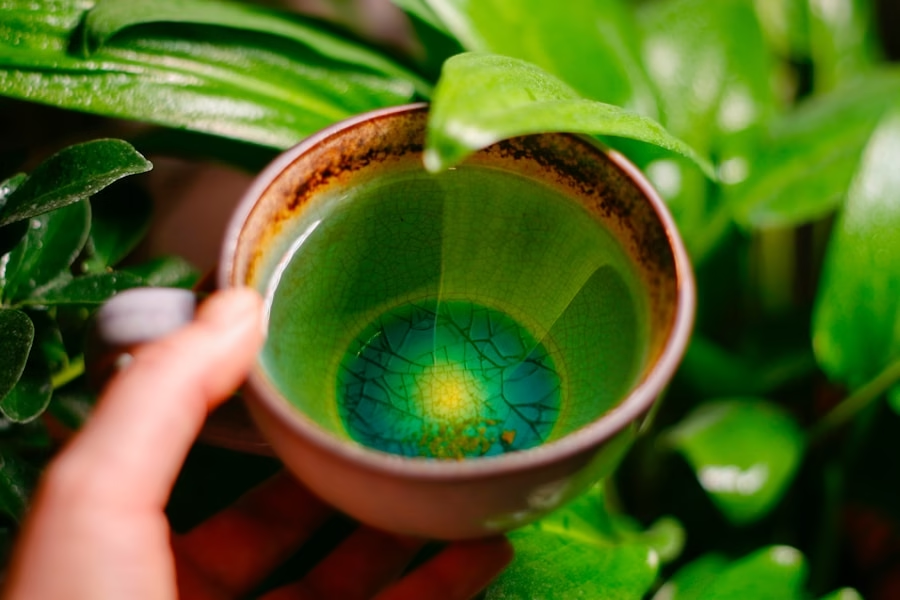Mindfulness is the practice of being fully present and engaged in the moment, without judgment. It involves paying attention to your thoughts, feelings, and bodily sensations, as well as the world around you. Mindfulness is about being aware of what is happening in the present moment, rather than dwelling on the past or worrying about the future. It is a way of cultivating a sense of calm and clarity in the midst of our busy and often chaotic lives.
One way to think about mindfulness is as a form of mental training. Just as we can train our bodies to be stronger and more flexible through physical exercise, we can train our minds to be more focused and resilient through mindfulness practice. By learning to pay attention to our thoughts and emotions without getting caught up in them, we can develop greater emotional intelligence and self-awareness. This can help us to respond more skillfully to the challenges and stressors that we encounter in our daily lives.
Setting Intentions for Mindfulness
Setting intentions is an important part of mindfulness practice. It involves consciously deciding how you want to show up in the world and what qualities you want to cultivate in yourself. By setting intentions, you can create a sense of purpose and direction in your life, and bring more mindfulness into your daily activities. Intentions can be as simple as “I intend to be kind to myself and others” or “I intend to approach each moment with curiosity and openness.” By setting these intentions, you can remind yourself to bring mindfulness to your interactions with others, as well as to your own thoughts and emotions.
One way to set intentions for mindfulness is to take some time each day to reflect on what is most important to you and what qualities you want to embody. You can write down your intentions in a journal or simply take a few moments to silently repeat them to yourself. By doing this, you can create a sense of alignment between your values and your actions, and bring more mindfulness into your daily life.
Practicing Mindful Breathing
Mindful breathing is a foundational practice in mindfulness meditation. It involves paying attention to the sensations of your breath as it moves in and out of your body, without trying to change or control it in any way. By focusing on your breath, you can bring your attention into the present moment and cultivate a sense of calm and relaxation. This can be especially helpful when you are feeling stressed or overwhelmed.
One way to practice mindful breathing is to find a comfortable position, either sitting or lying down, and bring your attention to the sensations of your breath. You can focus on the rise and fall of your chest or the feeling of air moving in and out of your nostrils. Whenever you notice that your mind has wandered, simply bring your attention back to your breath, without judging yourself for getting distracted. By practicing mindful breathing regularly, you can develop greater awareness of your internal state and cultivate a sense of inner peace.
Another way to practice mindful breathing is to incorporate it into your daily activities. For example, you can take a few moments to focus on your breath before starting a new task or during a break in your day. By doing this, you can bring more mindfulness into your daily life and create moments of calm and clarity amidst the busyness of your day.
Incorporating Mindful Eating
Mindful eating is a practice that involves paying attention to the experience of eating, without judgment or distraction. It involves savoring the flavors, textures, and smells of your food, as well as noticing the sensations of hunger and fullness in your body. By bringing mindfulness to the act of eating, you can develop a greater appreciation for food and cultivate a healthier relationship with eating.
One way to practice mindful eating is to take some time before a meal to pause and reflect on the experience of eating. You can take a few deep breaths and bring your attention to the food in front of you, noticing its colors, shapes, and aromas. As you begin to eat, try to savor each bite, paying attention to the flavors and textures as they unfold in your mouth. Whenever you notice that your mind has wandered, simply bring your attention back to the experience of eating, without judging yourself for getting distracted.
Another way to practice mindful eating is to pay attention to the sensations of hunger and fullness in your body. Before eating, take a moment to check in with yourself and notice how hungry you are on a scale from 1-10. As you eat, pay attention to how your hunger changes and how satisfied you feel after each bite. By doing this, you can develop a greater awareness of your body’s signals and cultivate a healthier relationship with food.
Engaging in Mindful Movement
Mindful movement involves bringing mindfulness to the experience of moving your body, whether through yoga, walking, or any other form of physical activity. It involves paying attention to the sensations of movement in your body, as well as noticing any thoughts or emotions that arise during the activity. By bringing mindfulness to movement, you can develop greater awareness of your body and cultivate a sense of presence and ease.
One way to practice mindful movement is through yoga or tai chi, which are both forms of movement that emphasize awareness of the body and breath. As you move through the poses or sequences, try to bring your attention to the sensations in your body, as well as the rhythm of your breath. Whenever you notice that your mind has wandered, simply bring your attention back to the experience of movement, without judging yourself for getting distracted.
Another way to practice mindful movement is through walking meditation. This involves walking slowly and deliberately, paying attention to each step as it touches the ground. You can also bring your attention to the sensations in your body as you walk, as well as any sounds or sights around you. By doing this, you can bring more mindfulness into your daily activities and cultivate a greater sense of connection with your body and the world around you.
Cultivating Gratitude and Compassion
Cultivating gratitude and compassion is an important part of mindfulness practice. It involves intentionally focusing on what is good in our lives and extending kindness towards ourselves and others. By cultivating these qualities, we can develop a greater sense of connection with ourselves and others, as well as a deeper appreciation for the present moment.
One way to cultivate gratitude is through keeping a gratitude journal. This involves taking some time each day to write down three things that you are grateful for. These can be big or small things, such as a beautiful sunset or a kind gesture from a friend. By doing this regularly, you can train your mind to notice the positive aspects of your life and cultivate a greater sense of appreciation.
Another way to cultivate compassion is through loving-kindness meditation. This involves silently repeating phrases such as “May I be happy, may I be healthy, may I be safe” while bringing to mind different people in your life. By doing this regularly, you can develop greater empathy and kindness towards yourself and others.
Creating a Mindful Environment
Creating a mindful environment is an important part of supporting mindfulness practice. It involves setting up your physical space in a way that supports calmness and clarity, as well as surrounding yourself with people who support your mindfulness practice.
One way to create a mindful environment is through decluttering and organizing your space. This can involve clearing out any unnecessary items from your home or workspace, as well as creating designated areas for mindfulness practice such as meditation cushions or yoga mats.
Another way to create a mindful environment is through surrounding yourself with supportive people. This can involve seeking out friends or community groups who share an interest in mindfulness, as well as setting boundaries with people who may be negative or unsupportive.
In conclusion, mindfulness is a powerful practice that can help us cultivate greater awareness, presence, and compassion in our lives. By setting intentions for mindfulness, practicing mindful breathing, incorporating mindful eating and movement, cultivating gratitude and compassion, and creating a mindful environment, we can bring more mindfulness into our daily lives and experience greater peace and well-being.




